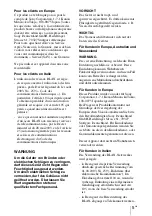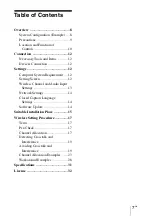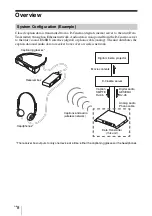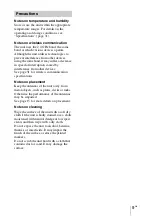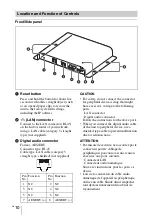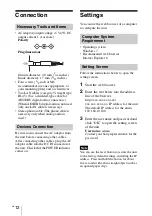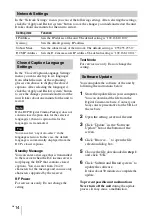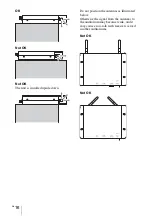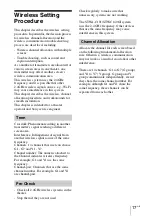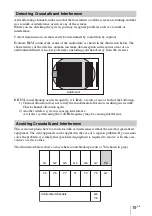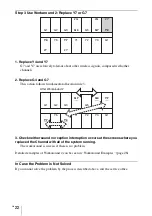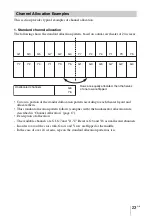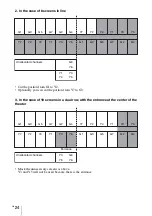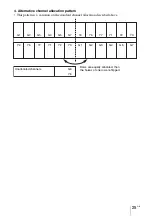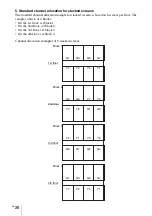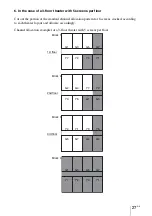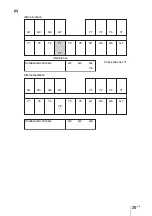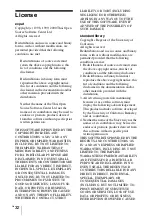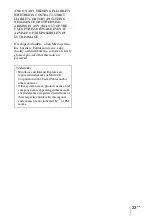
GB
18
Fundamental allocation rule
1. Choose at least one unallocated channel-pair.
2. If possible, refrain from using the same channel, such as G1 and G1.
3. The same channel number, such as G1 and G1, or G1 and Y1, should not be used for
adjacent screens (side-by-side, facing one another, or diagonally from one another).
The illustration below shows an example of channel allocation for a theater with 8 screens (1
row of screens on either side of a central corridor). Screens are depicted as rectangular boxes
in the figure. Screens marked "×" break fundamental allocation rule 3.
The illustration below shows an example of correct channel allocation for a theater with 7
screens on either side of a central corridor.
- G1 and Y4 are used at 2 screens. Same channels (G1 and G1, Y4 and Y4) should be allocated
as far from one another as possible, as shown in the illustration.
- Channel groups of the same number (e.g. G1 and Y1) can be allocated to screens closer
together than identical channels (G1 and G1).
- Channel-pair G6 and Y6 is kept unallocated in the example. The unallocated channel-pair can
help to avoid crosstalk and interference, as explained in “Avoiding Crosstalk and
Interference” (page 19).
For further examples, see “Channel Allocation Examples” (page 23)
G1
G2
Y2
Y3
Y2
Y2
Y4
Y5
×
×
×
×
Unallocated channels
G1
G2
G3
G4
G5
G7
Y4
Y4
Y5
Y7
Y1
Y2
Y3
G1
G6
Y6


